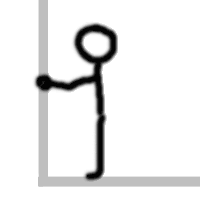I would have to concede that 90% of the erroneous results of chronograph use are user related and not mechanical.
I have always tried to be technically proper in my set ups and go threw all the motions and still had trouble off and on. Hence my overall opinion.
Just for the record: The reason I often find myself on the flip side of this debate is that all my discrepancies ceased to exist when I quit using my chronograph. Not just cheaper or faster but actually better more reliable data resulted from measuring gravitational drop from a 100 yrd zero to a 20moa hold needed to connect at 870yrds. After using that known trajectory to establish my velocities instead of my chrono I no longer needed to cheat my own numbers, no longer needed to fudge to get the calculators to align with the reality. I tested my loads for accuracy at those ranges with the same rounds. Saving time and barrel life.
The barrel mounted models may offer more consistency in speed tracking but would in all likely hood eliminate the ability to fine tune a load at the same time.
My method of measuring drops lets me, fine tune a load, check long range accuracy, verify drops and establish my velocity all at once without buying anything extra or messing with set up.
So as I understand it, you input BC values provided by Bryan Litz or some other source (perhaps the bullet manufacturer), and then proceed to input MV values into a ballistics program until you enter a MV that provides predicted bullet drops matching your measured drops at the distances you measured those bullet drops in the field. And this is working well for you. I'm not going to argue or disagree with your success using this method. This method could produce acceptable results, particularly if you hunt at the same elevation you field measured bullet drops down range.
However, here are links to two different articles. One authored by Bryan Litz. The second is authored by Michael Courtney, after Mr. Litz and Mr. Courtney conversed about the various reasons for the difference in bullet BC values the two were establishing for the same bullets; one based on their measurements of bullet speed and the other based on measurements of bullet time in flight.
This
first link is authored by Bryan Litz:
http://www.appliedballisticsllc.com/index_files/AccurateSpecificationsofBallisticCoefficients.pdf
This
second link is an article authored by Alex Halloran, Colton Huntsman, Chad Demers, and Michael Courtney:
http://www.dtic.mil/cgi-bin/GetTRDoc?AD=ADA555975
Upon additional field testing in the effort to determine the cause or causes for the differences in bullet BC measurements resulting from their independent testing, here are some conclusionary statements from the Courtney report:
"
Further work will be necessary to determine the cause of BC variations between measurements conducted by Litz and other independent measurements. We suspect some other causal factor related to lot-to-lot bullet variations or something related to firing from different rifles. There is also the possibility of a larger than estimated error in the acoustic method or the dual chronograph method.
It seems that different lot numbers and different rifles can routinely produce as much as 20% differences in BC when firing the same make and model of bullet. This suggests that predictions of ballistics programs are no more than a starting point for long-range shooting, and that predictions might be much more accurate if a BC is determined for a particular bullet in a particular rifle."
According to Courtney, BC values determined after carefully performed field measurements conducted by the two independent efforts
routinely differed by up to 20%.
My conclusion: Inputting a published bullet BC value into a ballistics program and then entering MVs until the ballistic program provides reasonably correct predicted bullet drops, in the effort to establish the MV of the bullet fired from your rifle
will result in errant muzzle velocities, if the BC values are incorrect. Granted, some value for MV input into a ballistic program will produce predicted drops to match those measured in the field. But if the BC value is incorrect, so will the MV be incorrect. You'll have arrived at a some combination of errant BC and MV that matches your measured drops at the environmental conditions that were entered into the ballistics program. Predicted drops using those errant values of BC and MV could provide reasonable close-to-correct predicted drops provided the environmental conditions of station pressure and temperature are similar to the enrironmental conditions at the locations and time the bullet drops were measured. Under significantly differing environmental conditions, predicted drops will be in error, because the MV and BC values aren't correct.
The value of chronographed MVs: When I measure and enter correct MV into a ballistics program, I remove one of the two unknowns being entered into the ballistics program. Having only one unknown, the ballistics program can now be used to accurately determine the last unknown - in our scenario - bullet BC. MV has now been measured and is a known value. The BC entered into the ballistics program that now yields predicted drops that match the bullet drops measured in the field will be a fairly accurate bullet BC for that bullet fired out of my rifle.
Less uncertainty. Better predicted drops at all differing environmental conditions of variable elevations, temperatures, and wind conditions, because the input values for MV and BC are now 'more' correct.
PS: Both Litz and Courtney occasionally post on this Forum. Either should feel free to comment, add to, clarify, or correct anything within this Post. They are both qualified to correct any misinformation, misinterpretation, or error(s) on my part. The information in the links I provided could also now be superseded by more current studies and conclusions. The Courtney Research Report is dated February 1, 2012.



